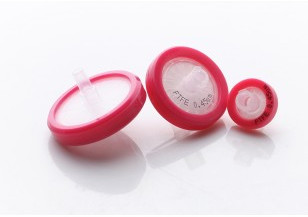In the modern laboratory processes, PTFE or Polytetrafluoroethylene membrane filters play a vital role in filtration of organic substances. They are also considered suitable for purification of gaseous solvents and aggressive chemicals. It helps in removing the contaminants from a solvent. These filters have compatibility with a wide range of solutions. Also, they deliver exceptional flow rates required for complex procedure like sample preparation, sterile filtration, HPLC filtration, and clarification of corrosive solutions. The versatility of PTFE membrane filter makes it a preferred option for applications that require precision and accuracy. In this regard, there are some important factors that you shouldn’t overlook. Here, they are:
1. Choose According to Solvents:
In the laboratory-based filtration, the accuracy of process largely depends on the types of solvent used. The effectiveness of filter membrane is imperative. The solvent shouldn’t lead to any chemical reaction or inaccuracy when passing through the filter. PTFE filters are a prominent choice for such applications due to their compatibility with many types of solvents.
2. Choose According to Hold-Up Volume:
At the time of buying PTFE filter, you should make a careful evaluation of the hold-up volume. These filters are known for their low hold-up volume which ensures a comparatively high sample recovery. Apart from this, you should also check the throughput of the filter. It should be optimized for better support.
3. Choose According to Features:
The selection of PTFE membrane filter should be essentially done according to its technical specifications and features. These filters should be suitable for the intended applications. Here, you need to select the right combination of features like sterility, filter diameter, housing material, fluid volume, pore size, and other operating parameters. Usually, the selection of pore size and diameter has to be made according to the volume of sample passing through it. For more precision and high performance, you should select the filters designed with the right type of connectors. Check their suitability for different pressure and temperature settings as well. In terms of housing material, prefer polypropylene or PP housing with color coding.
4. Choose According to the Pricing:
It is advisable to choose the PTFE filters according to your filtration budget and specific requirements. You can leverage the low pricing by placing the order for a bulk quantity. Ideally, compare the pricing model of the leading manufacturers before making the selection.
Apart from these factors, you should also check the labeling of the filters. It should be properly done with color coding. The pore size and membrane material must be clearly given on the label. This ensures proper usage of the filters without damaging the entire batch. By considering all these points at the time of selecting the membrane filters, you can save costs and improve the efficiency of your process.
Essential Tips to Find the Best PTFE Membrane Filters
26.12.17
Posted By Jinming Zhou


